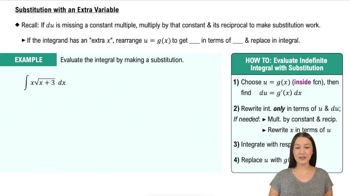Composition of Functions
Evaluate each expression using the functions
f(x) = 2 − x, g(x) = { −x, −2 ≤ x < 0
x − 1, 0 ≤ x ≤ 2
c. g(g(−1))
 Verified step by step guidance
Verified step by step guidance Verified video answer for a similar problem:
Verified video answer for a similar problem:



 5:56m
5:56mMaster Adding & Subtracting Functions with a bite sized video explanation from Patrick
Start learning